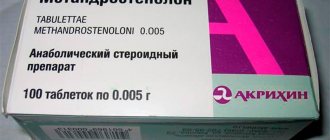Full text of the article:
People who frequent fitness centers have probably at least heard of interval training.
. The essence of such training is approximately clear from the name. Interval training involves alternating periods of intense physical activity with periods of recovery. All this happens during one lesson. It turns out that a person experiences an uneven load, and the body is forced to constantly adapt to new conditions.
What is the difference between the interval training method?
It would seem that the very essence of training is to develop certain qualities and abilities in a person, therefore the duration and intensity of training must be slowly but systematically increased. What is so special about interval training?
Fitness instructors believe that interval training is more effective than classical training. Alternating periods of “activity” and “rest”
allows you to make the overall workout more intense and burn more calories. Interval training will be especially useful for people who want to lose weight.
Causes of exhaustion in athletes
This problem occurs much more often than is commonly thought. Neglecting recovery and rest is a direct path to exhaustion. Purely psychologically and emotionally, it manifests itself in a reluctance to go to training, in a state of lethargy and apathy.
Lack of recovery significantly increases the risk of injuries of varying severity - they can be unexpectedly received even with a relatively small and usual load. This happens when microdamage to muscle fibers accumulates and leads to damage to muscle tissue, tendons and ligaments. We also note that with age, the rate of recovery of all body systems decreases.
How to train properly
You should not start interval training on your own; this type of training is not suitable for everyone; you should first consult a doctor to make sure there are no contraindications. The main contraindications to interval training may be associated with the presence of cardiovascular diseases.
. People with heart disease are contraindicated for high-intensity exercise, although they can and should still play sports. An alternative would be Nordic walking, but interval training would have to be abandoned.
Although interval training seems easier than classical training due to the “rest” periods, this is far from true. To get into interval training, you need to have some physical fitness. To test your strength, start doing cardio workouts
and gradually increase their duration. If this doesn't make you feel worse, you can try interval training.
You also need to start gradually. During the first training sessions, short periods of intense exercise will suffice. Keep them no longer than 30 seconds.
, this will make it easier for you to control your condition and regulate the load. At the same time, periods of light activity may be longer, allow yourself to rest. Interval training does not mean that the “load” and “rest” intervals must be the same.
Experiment results
When analyzing changes based on the 1RM test, the group that rested longer had significantly greater increases in maximum strength in both the bench press and squat .
However, somewhat unexpectedly, muscle volume also increased more in this same group .
Although we cannot be sure what is causing these results. It can be assumed that they are associated with a decrease in the overall training load in the second group (who rested less) due to a decrease in the weight that the subjects were able to lift after a short rest compared to a long rest.
There is a well-established dose-response relationship between training load and hypertrophy, in which higher volume correlates with greater muscle growth. Very short rest intervals between sets can negatively impact hypertrophy by reducing the amount of weight you can use on subsequent sets .
This means that if there is a synergistic effect in increasing metabolic stress, it is eclipsed by the reduction in overall workload .
How to Create an Interval Training Plan
Any workout should start with a warm-up
, muscles and joints need to be prepared for increased stress. To make your muscles more elastic and reduce the likelihood of sprains, you need to warm up your body well. The set of basic exercises can be different, the main thing is that they involve different muscle groups.
During your first interval training, it is better to alternate between walking and jogging.
, and walking intervals can be significantly longer than jogging intervals. It is important to monitor your health, especially your pulse. If you feel dizzy or experience other undesirable symptoms while jogging, you need to switch from running to walking or stop training. During running, your heart rate increases, but during the recovery phase it should decrease and be no more than 30-40% higher than your typical resting heart rate.
At the beginning of your workout, determine the duration of the intense intensity interval for yourself and do not increase it throughout the entire workout. If the load seems insufficient to you, raise the bar for the next lesson. Although it’s still not worth increasing the load sharply. There is a popular “ten percent” rule.
, according to which you need to increase the load by no more than 10% per week, then the body will not experience severe stress.
Don't work too hard. The workout should provide you with a challenge, but the challenge should not be excessive. If you feel pain or your heart rate increases too much, you should stop training. Signs of fatigue or overload may appear suddenly or increase gradually; learn to listen to your body and not ignore its signals.
What does the concept of “rest” include?
You can take a break from training in completely different ways - everyone has their own recovery methods, it’s better to understand them in advance. Some of them are suitable for almost everyone: first of all, proper sleep, types of gentle physical activity, stretching and massage - all this can help after intense exercise. Medical and biological methods of recovery: various types of physiotherapy, hot bath and sauna.
With prolonged use of the same method, the restorative effect gradually decreases - the body adapts and stops responding properly. Addiction occurs more slowly when general means are used - for example, a bath combined with water treatments, a relaxing full-body massage.
The effectiveness of comprehensive restoration
Complex restoration methods are recognized as the most effective today. Temperature effects can be combined with water and pressure chamber procedures or with various massage techniques. When choosing procedures for the complex, it is important to remember that the principle of action should be “from the general to the specific.” That is, it is first important to help the whole body warm up in a sauna, for example, and only after that perform a foot massage for runners.
Restoration of the musculoskeletal system
It is equally important to take into account not only the restoration of the body as a whole, but also the rest of the musculoskeletal system. Its condition determines the intensity of the loads, their frequency and method of training. Physiotherapeutic means of its recovery can help eliminate muscle pain and prevent possible injuries.
What should the load interval be?
Beginners often think that the load intervals in interval training should be long and take at least a few minutes, but here the count is not in minutes, but in seconds. It is better to do more intervals, but keep them short, from 6 to 30 seconds
. In this case, you can be sure that the body will really work under increased load, and you will “give your best” to the fullest.
Any load must be justified, otherwise you risk harming yourself. During the specified interval, the muscles will be able to produce a sufficient amount of lactic acid
, but not to spend too much energy, which could lead to damage. For amateur sports, long intervals of increased load are not needed; the longer the interval, the more difficult it will be to control the load, especially if you are exercising without an instructor.
For professional athletes, the duration of intense exercise intervals can reach three minutes, but you need to understand that during this time the muscle need for oxygen and glycogen will greatly increase, and with it the risk of damage. It takes many months, or even years, to prepare for such loads, so it is better for beginners to stay in the range of 5-30 seconds
.
Break between sets
The first and shortest type of vacation. They should never be neglected. If you are aiming to lose weight, then these periods of time should be minimized. Why? Because to reduce your own weight you need high-intensity training. Of course, exactly as much as your experience and strength allows you. You should not bring your body to exhaustion. On average, rest should be 45-60 seconds. If you are focused on gaining muscle mass, then recovery periods can reach 3-4 minutes. And all because with this type of training process the load on the muscles increases significantly, therefore, they need more rest.
In general, you should not neglect this type of rest, since without it, correct muscle function is impossible.
What should the recovery interval be?
The principle of interval training is to alternate periods of stress and periods of recovery. They should not be equal, but should correlate with each other in a ratio of approximately 1:6
.
If the load period lasted about 10 seconds
, then recovery will take about a minute.
This is not a strict addiction, the body recovers differently in different people, so you need to rely mainly on your own sensations, and not on the timer. During the recovery period, breathing should calm down and heart rate should decrease by 50-60%
. Tension should also disappear in the muscles; if this does not happen, then extend the recovery interval. If the measures taken also do not help the body return to normal, and the muscles hurt or remain tense, then end the workout.
Complete rest
No matter how hard you prepare for a competition or just actively train, you still need proper rest from training. Set aside at least one day in your schedule when you will not have any physical activity. This is required so that the level of the hormone cortisol returns to normal and the body stops living in constant stress. In one day, your muscles will not atrophy, but with quality rest, they can give the effect of supercompensation (in simple terms, grow to a greater extent than expected).
How many intervals should there be in one workout?
You can adjust the number of intervals yourself depending on your physical fitness and general condition. Listen to your body. If you begin to experience muscle pain, tension does not go away, shortness of breath appears, and your heart rate does not recover, then you need to complete the workout, even if you did not manage to complete the usual number of intervals. You can't overcome the pain. If you are too tired, then the training will be less effective; you should not wait until your “second wind” opens.
Recovery after prolonged exercise
Rest after a long-term load - for example, a marathon - should also be long, it cannot be passive: just lying on the couch is contraindicated. We tell you how to restore an athlete’s body after very intense and long training sessions. The same methods, only on a smaller scale, can be used after other loads, including with an amateur approach.
Sports massage
This is one of the best ways to restore all systems if done correctly. Sports massage is an important component of an athlete's training plan and is used before and after training or competition. This is important for maintaining muscle tone, while amateurs often use massage for relaxation. Another difference from conventional massage is acupressure: acupuncture can restore the functionality of even the deepest muscles in a very short time.
Warm salt bath
If possible, it should be replaced with a leisurely swim in the warm sea waves. This procedure helps muscles relax and joints recover. Sea water has a very good effect on the entire body as a whole.
Recovery running or walking
After a marathon, you should never just stop or sit down: it is recommended to walk for some time, and in the next two or three days after a long race, jog for half an hour.
Leg stretching
It is very important to stretch the large leg muscles correctly - to do this, you need to pre-warm them, for example, jog for 10-15 minutes. After this, you can bend and lunge in different directions and pull your knees towards your chest. If you don’t stretch, you can very quickly discover “woodiness” in the muscles and the inability to move normally.
Water balance
After prolonged exercise, the body becomes dehydrated - to quickly recover, you need to drink a lot of clean water. You can’t do this while you’re running—it’s best to just rinse your mouth with water. Professional athletes use special drinks with carbohydrates and electrolytes for this purpose.
Balanced diet
Immediately after a marathon or other long-term physical activity, you need to eat a hearty meal - but it is important to ensure that you do not overeat. Food intake should be as balanced as possible, with plenty of amino acids and vitamins. The presence of carbohydrates is also necessary - the faster you run, the more carbohydrates your muscles absorb.
Omega-3 fats should also be included in the diet - these are the only fats that the body is not able to produce on its own. It is omega-3s that reduce tissue inflammation and relieve muscle tension after training.
Kinesio taping
This is a relatively new technique that has become widespread even among people who are very far from big-time sports. It allows you to train in comfort, avoid injury - and recover faster. The effects of kinesio taping are pain relief and stabilization of joints, support of muscles and ligaments, skin protection, improvement of microstimulation and lymphatic drainage of tissues. Gluing of adhesive tapes that can be wet should only be done by certified specialists; you should not do this yourself, so as not to harm your health.
Back Next
Can I do interval training every day?
Interval training is considered high intensity training. If you have had a long workout or are not in good physical shape, then allow at least two days for your body to recover. But this does not mean that any physical activity is contraindicated for you the next day. Instead of interval training, you can do a set of exercises to strengthen your heart.
It is important to prevent the body from overworking. Signs of “overtraining” may include:
:
- rapid heartbeat at rest, which persists even the next day;
- muscle pain;
- persistent feeling of extreme fatigue.
Is it possible to speed up muscle recovery?
It is possible, but not very significant. The speed of muscle recovery greatly depends on genetics, age, overall training experience and a number of household factors. The simplest things help well: sufficient sleep at night, short sleep during the day, a very nutritious diet, taking sports nutrition, self-massage, thermal procedures (baths, sauna, bathhouse), light stretching. But the most powerful factor is proper training planning and a reasonable set of exercises.
You can read more about recovery methods in the article How to recover after a workout
Is it possible to exercise if your muscles are still sore from the last workout? What is the best way to train your body: to the point of exhaustion or often, but little by little? How to restore strength faster. Sechenov effect. Overtraining and how to avoid it
- 2
One of the options for interval training for beginners
There is no general plan for interval training; it must be developed individually and adjusted depending on the general condition of the body. Let's offer just one of the possible scenarios:
- Start with a warm-up
. To warm up your muscles, 5-10 minutes will be enough. During this time, try walking at a fast pace or jogging a little, doing a few bends and squats. - Make a more intense burst
and run for a few meters at a speed that is approximately half your maximum running speed. This will help the body “get the blood flowing” in the muscles and prepare for an increase in load. As a result, you should feel that your muscles have warmed up and warmth has spread throughout your body. - From this point on, you can begin to alternate jogging with running at maximum speed
. It is recommended to jog for about a minute, and then accelerate for 5-6 seconds. In order not to be distracted by a stopwatch, you can measure time “at hand”; it is believed that in 6 seconds a person can pronounce three three-digit numbers. Of course, you need to do this mentally so as not to lose your breath. - After the acceleration interval, you need to return to the rest interval
, but you cannot stop; if it is difficult for you to constantly jog, then switch to a walk. - For the first workouts, it is enough to complete 10-20 intervals
, so in total you will spend about half an hour on training. But if you feel that your muscles have begun to ache, and the tension does not subside even during periods of rest, then it is better to complete the workout. - You need to end interval training not abruptly, but gradually
. Switch from running to walking and walk briskly for at least 5-10 minutes.
Leisure
For example, in addition to one full day off, I try to give my muscles at least one day of active rest. No, it's not walking around the city. I include a variety of loads depending on the time of year. In winter it’s snowboarding, in summer it’s tennis, in autumn and spring it’s swimming. Muscles adapt to a certain type of load, so if you periodically change the type of activity, new opportunities open up for them. Believe me, one day on the ski slope, and your leg muscles ache so much that returning to your hotel room becomes a problem. The load on them is no less, and in some places even more, than in the gym.
Things to remember
Interval training is considered more effective than classical training, during which the load gradually but constantly increases. During interval training, the body burns more fat, and along with it, calories. However, you should switch to interval training only after receiving your doctor's approval.
You need to start training gradually and do not forget about warming up. The load also needs to be increased gradually. Interval training cannot be done every day; it is optimal to train 2-3 times a week. It is recommended to do cardio between interval training sessions.
During training, you need to carefully monitor the condition of your body and avoid overloading. Muscle pain and spasms should not be tolerated. When the first signs of fatigue appear, you need to complete the workout.
Why is rest after exercise important?
Those qualitative and adaptive changes in muscles, for which, in fact, we play sports, occur not during the training itself, but after it, during the period of rest and recovery. It is then that the muscles of the body are filled with glycogen, new protein is synthesized and muscle tissue grows. If there is no rest, the body will not get time to rebuild tissues, which means there will be no effect from the training at all - or it will be far from what you originally expected.
How to return to exercise
After a long rest, you should not suddenly return to frequent and intense training. The body is unaccustomed to the load, so it must be introduced gradually.
It will be easier to restore your previous level of activity thanks to the previous training period - you will need 1-2 weeks. The muscles will quickly remember the acquired movements, the pulse will return to normal, and breathing will become more even.
Perhaps after full recovery you will feel the effect of supercompensation. To do this, include one even more difficult workout in your training week, and you will see what a rested body is capable of.
In the first 2-3 weeks after returning to active activities, limit yourself to one high-intensity workout per week. More frequent extreme loads after rest can negate its results and worsen your condition.
So, breaks in training must be taken to avoid overtraining, maintain and improve results. These breaks are necessary:
- every 3-4 months of regular classes (3-5 times a week);
- after training intensives, for example, #sektabootcamp;
- if it is impossible to pay much attention to training (for example, a very busy period at work).
If you need a break from active training, reduce the load gradually. First, reduce the intensity of your activities, and then their volume.
To stay in shape, work with nutrition. Set specific goals for the rest period, slightly reduce the amount of food, arrange challenges.
After returning to an active training regimen, do not attempt to complete the entire training volume at once. Increase the intensity gradually.
References: 1. Gleeson M. Biochemical and immunological markers of over-training // Journal of sports science & medicine. – 2002. – T. 1. – No. 2. – P. 31. 2. Nikolaeva Yu. A., Konotopchenko O. A., Dubolazova D. A. OVERTRAINING AND UNDERRECOVERY OF SKI ATHLETES // PHYSICAL CULTURE. – 2013. – P. 55. 3. Daniel Lorenz, Scot Morrison, Current concepts in periodization and conditioning for the sports physical therapist. 4. Pearle Nerenberg, MSc., RD, 6 Steps for a Healthy Off-Season Nutrition Plan, 2022 5. Smolensky A.V. et al., MONITORING PHYSICAL CONDITION DURING RECREATION AND SPORTS AND HEALTH ACTIVITIES, Moscow – 2008.











